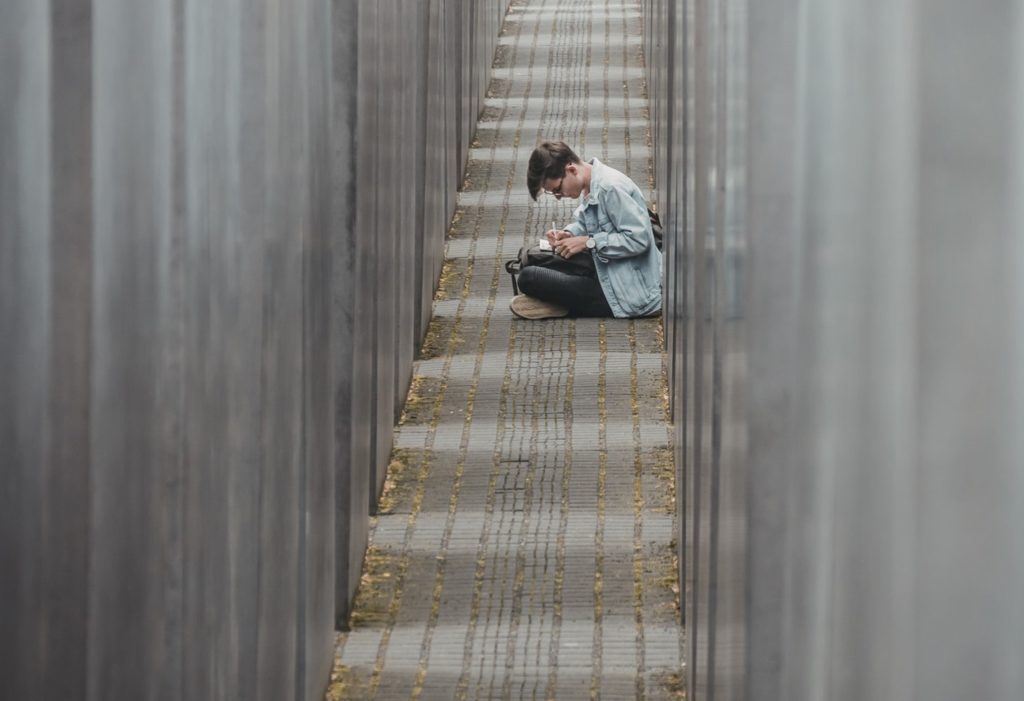Sometimes creativity flows easily. Words find their way on the page effortlessly, requiring minimal editing. Each word knows its place, and I’m simply a conduit through which they flow.
And sometimes… sometimes, the tap’s a bit rusted over. The creative process is anything but smooth or fluid. I wrestle each word onto the page. Each successful sentence is a fight.
Writing is labor
In her viscerally elegant work, The Writing Life, novelist and poet Annie Dillard is brutally honest about the realities of what writing demands of us:
The page is jealous and tyrannical; the page is made of time and matter; the page always wins… the page which you cover slowly with the crabbed thread of your gut.
Misery loves company, and I keep these words in my pocket as a comforting talisman.
Successful writers—that is, writers who write—are often asked to describe how they overcome these battles, how they successfully keep themselves engaged and productively move through creative ebbs. For many, establishing a writing routine is critical, even if that routine involves taking long breaks from writing.
For others, their days are too varied, their schedules too hectic, to allow for a single daily ritual. They might rely instead on using specific tools, such as favorite pens or notebooks, to create a sense of continuity in their practice. Writing is, after all, a physical activity, regardless of where you do it. Paul Auster captures this beautifully when he describes the sensory act of pen on paper:
I always have the sense that the words are coming out of my body, not just my mind. I write in longhand, and the pen is scratching the words onto the page. I can even hear the words being written.
Find comfort in your tools
When I’m not typing at my laptop, I like to write with yellow Paper Mate 7mm mechanical pencils in a hardback, unlined notebook. There’s something both quaint and adult about these small, serious pencils, and that feeling of nostalgia carries me and my work. Unlined paper gives me the freedom to write in any direction I choose, and I often use graphic organizers to help me sort the mess of thoughts in my mind. When I need a closer connection to my words and ideas, turning to these comfortable familiars helps.
If you’re looking for inspiration, or want to try something new, consider taking a note from Paul Auster and reconnect with the physicality of pen-to-paper. Need ideas? Here are some famous writers’ favorites:
Margaret Atwood writes first in longhand using a Rollerball, or any pen that moves smoothly across the page, before typing them up on her computer (she has two set up in her space: one with, and one without, internet access)
John Grisham likes to do his writing on a legal pad
Emily Dickinson wrote on whatever paper scraps she could find, including envelopes
Neil Gaiman has several favorite fountain pens
Toni Morrison preferred to write her first drafts on yellow legal pads with a no. 2 pencil, then revised her work by typing it into a computer
John Steinbeck, Iris Rainer-Dart, and Vladimir Nabokov all spoke highly of the Blackwing pencil
Lillian Hellman wrote her screenplays while chain-smoking at her typewriter
Do you have any favorite pens, pencils, notepads, or any special objects that help you set your creative stage? If you need more inspiration, the good people at New York magazine’s The Strategist created a list of the 100 best pens. Writing can feel like a grind, and when you need to give yourself a little treat, buying a few nice new pens can help you re-engage with your craft.
Credits
Photo by Nik Shuliahin on Unsplash
Music by bensound




